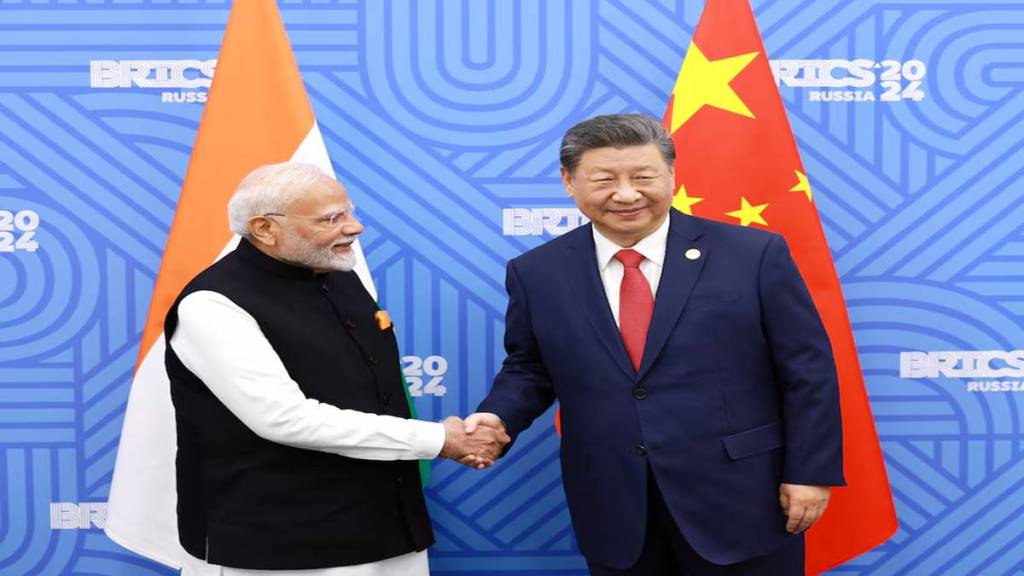The security situation along the Line of Actual Control (LAC) between India and China has remained sensitive and complex, particularly after the violent clashes in 2020 that resulted in the deaths of 20 Indian soldiers and four Chinese troops. Four years later, while both sides have engaged in diplomatic efforts to ease tensions, the region continues to be a focal point of military attention. Amid this, India’s defence strategy, as outlined by Army Chief General Upendra Dwivedi, remains a delicate balancing act between maintaining a strong military posture, engaging in dialogue, and securing its borders with neighbouring countries like Myanmar and Bangladesh.
Troop Levels and Winter Deployment Strategy
One of the most pressing questions regarding the LAC is troop deployments. General Dwivedi, in response to media queries ahead of India’s Army Day, confirmed that India is not considering a reduction in troop levels along the LAC this winter. “During winter deployment, the number of troops comes down. So therefore, at least in the winter strategy, we are not looking forward to any reduction of troops,” he said.
This strategy reflects India’s cautious approach to its northern frontier, recognizing the continued sensitivity of the border region. Despite the traditionally lower troop presence during winter, India has refrained from pulling back its forces entirely, as tensions with China remain unresolved. As Dwivedi stressed, troop deployments during the summer will depend on the progress of ongoing negotiations between the two countries, with a careful review process set for later in the year. The situation, though relatively stable, remains prone to sudden escalations, making military readiness a priority.
Restoring Trust: Diplomatic and Military Engagement
The India-China border standoff, which began in 2020, led to a complete rethinking of military deployments. As both sides moved tens of thousands of troops and military equipment into high-altitude regions, efforts to prevent further clashes became a diplomatic priority. Following a series of talks and disengagement agreements, there has been a push to reduce tensions through direct communication.
“The trust between the two countries has to have a new definition,” said General Dwivedi, highlighting that the future of the LAC will depend on continued dialogue. In October 2024, India and China agreed on a new framework for patrolling in regions like Depsang and Demchok in Ladakh, where clashes had occurred in the past. After these agreements, both sides began to resume patrolling in traditional areas, and two rounds of verification patrolling were successfully conducted. Both countries have expressed satisfaction with the new arrangements, which have been crucial for de-escalating tensions.
However, the army chief made it clear that there is no “buffer zone” along the LAC. Rather, temporary moratoriums have been implemented in sensitive areas, where both forces agreed to refrain from patrolling to avoid accidental clashes. As Dwivedi explained, “Where you feel that the nature or the degree of violence can be high and the fuse is short, you create some distances.” This temporary distance is intended to prevent violence in disputed regions.
Beyond the LAC: India’s Border Security with Myanmar and Bangladesh
While the LAC remains a focal point, India’s military is also engaged in securing its borders with Myanmar and Bangladesh. These regions have seen their own security challenges, requiring the Indian Army to adopt proactive measures.
The situation in Myanmar is particularly concerning, given the ongoing internal conflicts and the risk of insurgency spillover. In response, India has ramped up surveillance along the Indo-Myanmar border. “Enhanced surveillance and dominance over the Myanmar border are on,” Dwivedi stated, highlighting India’s efforts to secure its eastern frontier and prevent cross-border terrorism or insurgent activity.
Similarly, the security situation along the Bangladesh border remains a priority, with India focusing on preventing militant activities. Although the region is generally more stable than the LAC, India continues to monitor these borders closely, coordinating with neighbouring security forces to address any emerging threats.
Security in Jammu and Kashmir: Tackling Cross-Border Terrorism
The security situation in Jammu and Kashmir (J&K) is another area of concern for India’s military leadership. General Dwivedi revealed that a significant proportion of terrorists active in the region are from Pakistan. “Sixty percent of terrorists killed in Jammu Kashmir are Pakistani,” he stated, underlining the continued threat posed by cross-border terrorism.
India’s response to this threat has involved a significant increase in troop presence in the region. With the addition of 15,000 troops in 2024, the Indian Army has made strides in neutralizing terrorist threats and maintaining control over the region. This is critical, as India looks to balance its efforts to reduce violence and foster economic development with the ongoing battle against insurgency.
Modernization and Reform: Preparing for the Future
Looking ahead, General Dwivedi stressed the importance of modernization and reform in strengthening India’s military. The Indian Army’s transformation agenda is centered on five key pillars: joint operations, force restructuring, modernization, technology infusion, and human resource management. These reforms are part of India’s broader defence strategy to build a more agile and capable force.
The Army is particularly focused on integrating cutting-edge technologies into its operational capabilities, with a strong emphasis on self-reliance. The chief’s vision for the future of the Army is clear: to create a force that is ready for any challenge, both in terms of conventional warfare and emerging security threats.
Strategic Vigilance and Diplomatic Engagement
The situation along the LAC is one of complex, ongoing negotiations and military readiness. While India is committed to engaging with China diplomatically, the strategic imperative to maintain a strong military presence along its northern borders remains critical. The Army’s robust deployment in the winter and its focus on modernization and technological advancement are key elements of India’s overall defence strategy.


